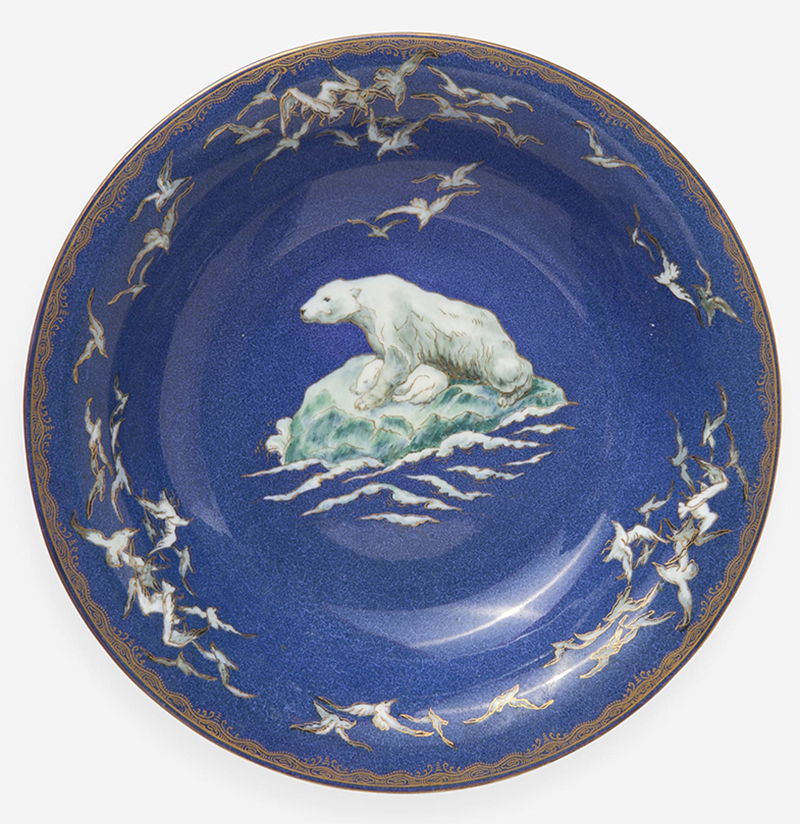Object of the Month: Wedgwood Bowl
By Bowdoin College Museum of Art
Polar bear bowl, bone china, designed by ceramicist James Hodgkiss for the firm Josiah Wedgwood & Sons of Staffordshire, England. Recent acquisition, Bowdoin College Museum of Art.
The Museum of Art has a growing collection of artworks that features the polar bear, the College’s mascot since 1913. With important works ranging in date from the seventeenth century to the late twentieth century, this collection allows one to trace the evolution of the visual representation of this Arctic mammal. It complements a larger collection of such images at the Peary-MacMillan Arctic Museum. For those who don’t know, a group of polar bears is referred to as a celebration. This month the Museum of Art is pleased to announce the latest addition to this celebration of polar bears.
Through the generosity of Eric Silverman ’85 and an anonymous donor, the Museum purchased at auction in February a rare bone china bowl from the 1910s featuring a polar bear and cub designed by ceramicist James Hodgkiss for the firm Josiah Wedgwood & Sons of Staffordshire, England. First established as a ceramic manufactory in the 1750s, Wedgwood has been one of England’s leading and most innovation producers of table wares and figural ceramics for over two centuries. Many of these wares were inspired by ancient Roman ceramics. During the late nineteenth century, under the leadership of Cecil Wedgwood, the company developed many innovative glazes, which were also inspired by historical examples. Trained as a chemist, James Hodgkiss was one of the company’s leading designer-draftsmen during this period and was responsible for many of these new glazes.
This bowl, likely part of a large dinner service, features Wedgwood’s sophisticated powder-blue or bleu souffle glaze. Wedgwood’s designers were inspired by eighteenth century Chinese porcelains with chuiqing (“blown blue”) glaze and gilded designs. To achieve this air-brushed effect, artisans at the Jingdezhen kilns blew powdered cobalt onto unglazed biscuit through a bamboo shoot covered at the end by a fine silk gauze. A second firing secured the powder onto the piece. Wedgwood’s designers studied early Chinese examples in the collection of London’s Victoria & Albert Museum and perfected the glaze at Wedgwood, which first introduced wares decorated with this glaze and gilding in 1912. A beautiful example of early twentieth century table ware, this bowl was among the most sophisticated porcelain objects made at the time. It joins other examples at the Museum of Art that bridge past and present, as it reveals how historical designs—in this case Chinese bleu souffle glaze—inspired later ceramic manufacturers and designers.
This bowl was created in the 1910s, only several years after the completion of the expedition seeking to reach the North Pole led by Robert Peary, Bowdoin Class of 1877. Peary’s expedition in 1909 made international headlines and furthered wider interest in the Arctic. During this period the polar bear came to symbolize the new frontiers that many nations sought to reach and explore. The Museum of Art is excited to add this Wedgwood bowl to its collection and to place it in dialogue with other artworks from around the globe and across time.
Frank Goodyear
Co-Director, Bowdoin College Museum of Art